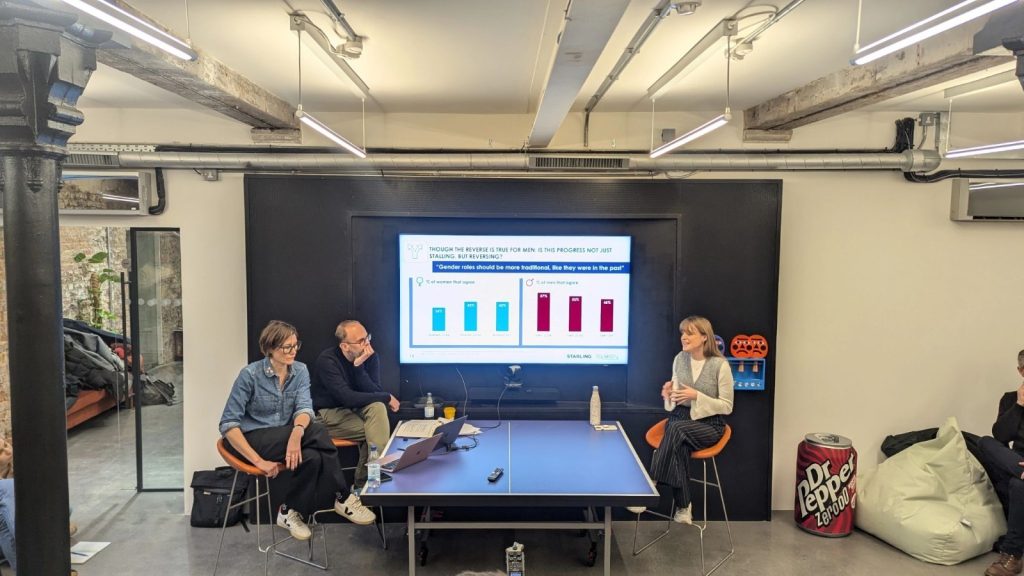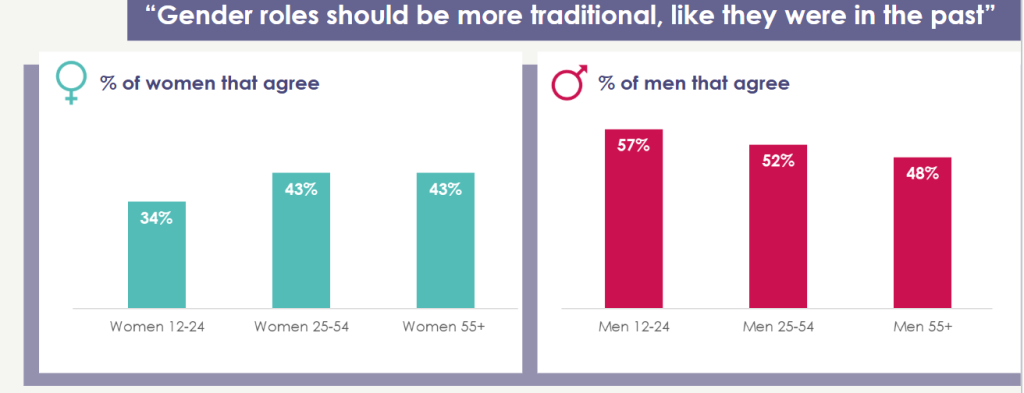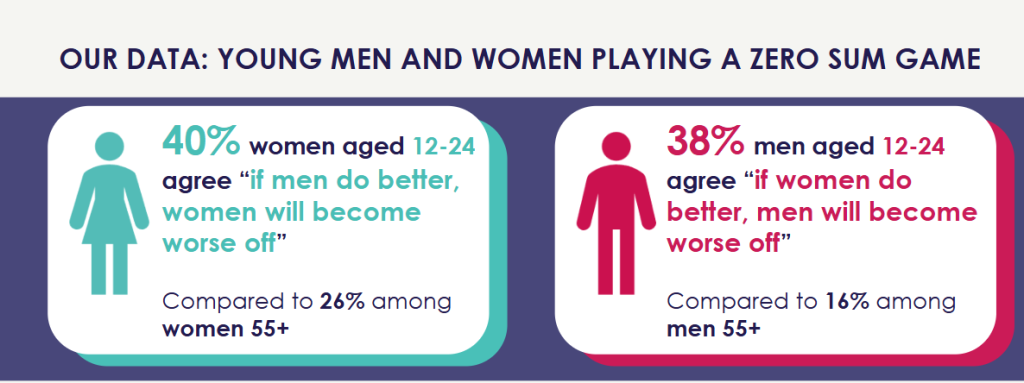Last week we launched ‘The Rift’ alongside Annie Auerbach and Adam Chmielowski from cultural insight agency Starling, at a breakfast session hosted by Pablo London. We were greeted by a pretty array of love hearts and romantic decorations at Pablo’s offices – a rather ironic reminder that when we should be celebrating the day of love, we were there to discuss how young men and women are being driven apart.
‘The Rift’ is the name we dubbed the growing divide between men and women that is happening at an alarming rate. It describes the deep ideological chasm that polarises them, setting them on separate paths and creating distinct cultural camps within their generation. We started working on understanding this Rift as a pro-bono piece of research with Starling back in 2023, but we didn’t quite know where our efforts would take us. To some dark places, it turns out, as it quickly became clear that this was a conversation that urgently needed to be heard.
But after so much time invested in uncovering the Rift, we were excited to finally put our findings out into the world at our event. And coupled with Starling’s cultural analysis, our survey of 1,500 nationally representative UK teens and adults revealed some pretty shocking statistics. Knowing this and considering the complex nature of what we were discussing, we shared back our report ‘panel-style’, framing our research with the disclaimer that we definitely don’t have all the answers, and inviting attendees not to shy away from taking part in what is undoubtedly a rather difficult conversation.

Our data told a clear story – something has gone quite wrong between young men and women. Among our ‘golden nuggets’ of insights we found that over 1 in 2 young men aged 12-24 desired that we ‘return to traditional gender roles’, a significant increase on older generations. What was interesting is how different this was to young women, who are embracing more liberal values and adopting more expansive goals. They’re 50% more likely to describe themselves as ‘independent’ compared to young men, with ambitions to learn, relocate and explore the world.

We were also particularly surprised to see how rife zero-sum thinking was among younger generations, with 38% of young men believe that if women succeed, men will be worse off (a view that was more than double that of men over 55). Though less severe, this trend was mirrored by younger women too. We couldn’t ignore the role of social media echo chambers in all of this, pulling men and women into very separate online spaces, and ‘cultural entrepreneurs’ like Andrew Tate fuelling and profiting of this polarisation.

It was pretty hard-hitting stuff for a Thursday morning, though it wasn’t all doom and gloom! We ended on sharing some glimmers of hope that were revealed from our data as we moved into considering what this could mean for the future. What stood out to us is that amongst all the negative sentiment was the strong desire among both young men and women to empathise with one another – 70% agreed that they wished they understood each other better. We took solace in this solid foundation of genuine curiosity that exists among both genders – something we can use as a springboard for creating lasting change.
We ended our session with Pablo London’s thought starters as to how brands can consider the role they play in the Rift, from consideration at the product development stage to avoid creating ‘artificial’ gender rifts, to the cultural narrative that brands take forward in communication and messaging. You could almost hear the buzz of brains whirring as our audience processed the information we’d shared and were starting to think how it applied to their own work.
We weren’t short of voices in the room though, as discussion immediately flowed. Questioning and commentary was varied and vast, from how we consider the increase in violence against women in all of this, to where specific gendered messaging might be necessary (like in the case of addressing men’s mental health), to exploring how this plays out by sociodemographics or among other gender identities – it was an exciting conversation to be a part of! We had clients from an array of industries join us and it quickly became clear that, like us, many had both a personal and professional stake in the topic.
So, what’s next? Together with Starling we are motivated to keep momentum high and to keep talking about this. If our event has taught us anything it’s that this is a topic that impacts both brands and the people that work for them in a myriad of ways.
We’re currently rolling out our findings on a wider scale, drawing further attention to this pressing problem. If you’re interested in learning more – or joining the effort to help bridge the growing divide between young men and women – reach out to us at [email protected].
Let’s keep the conversation going!
Read more about our research in recently published articles on Research Live and Creative Salon.


